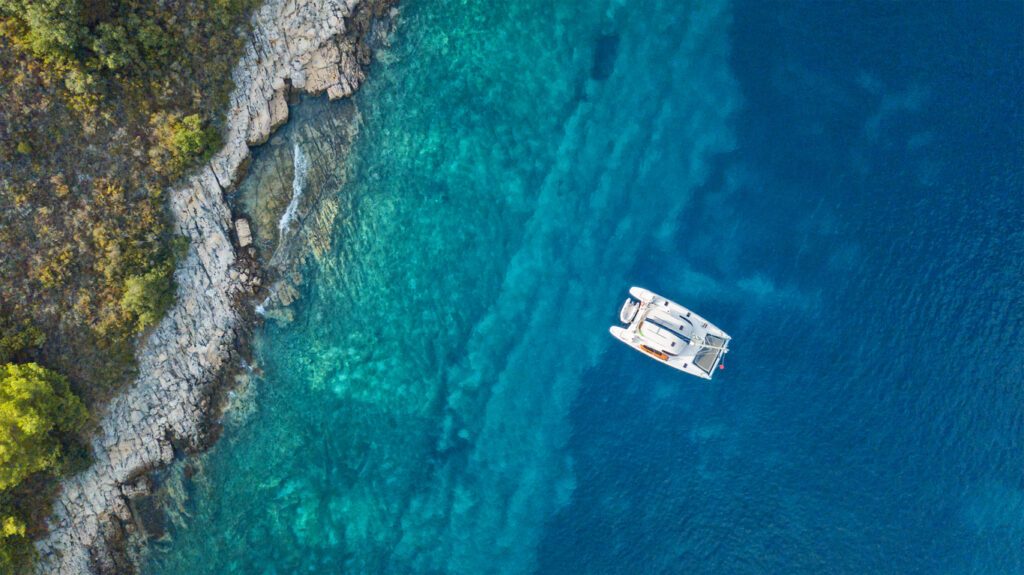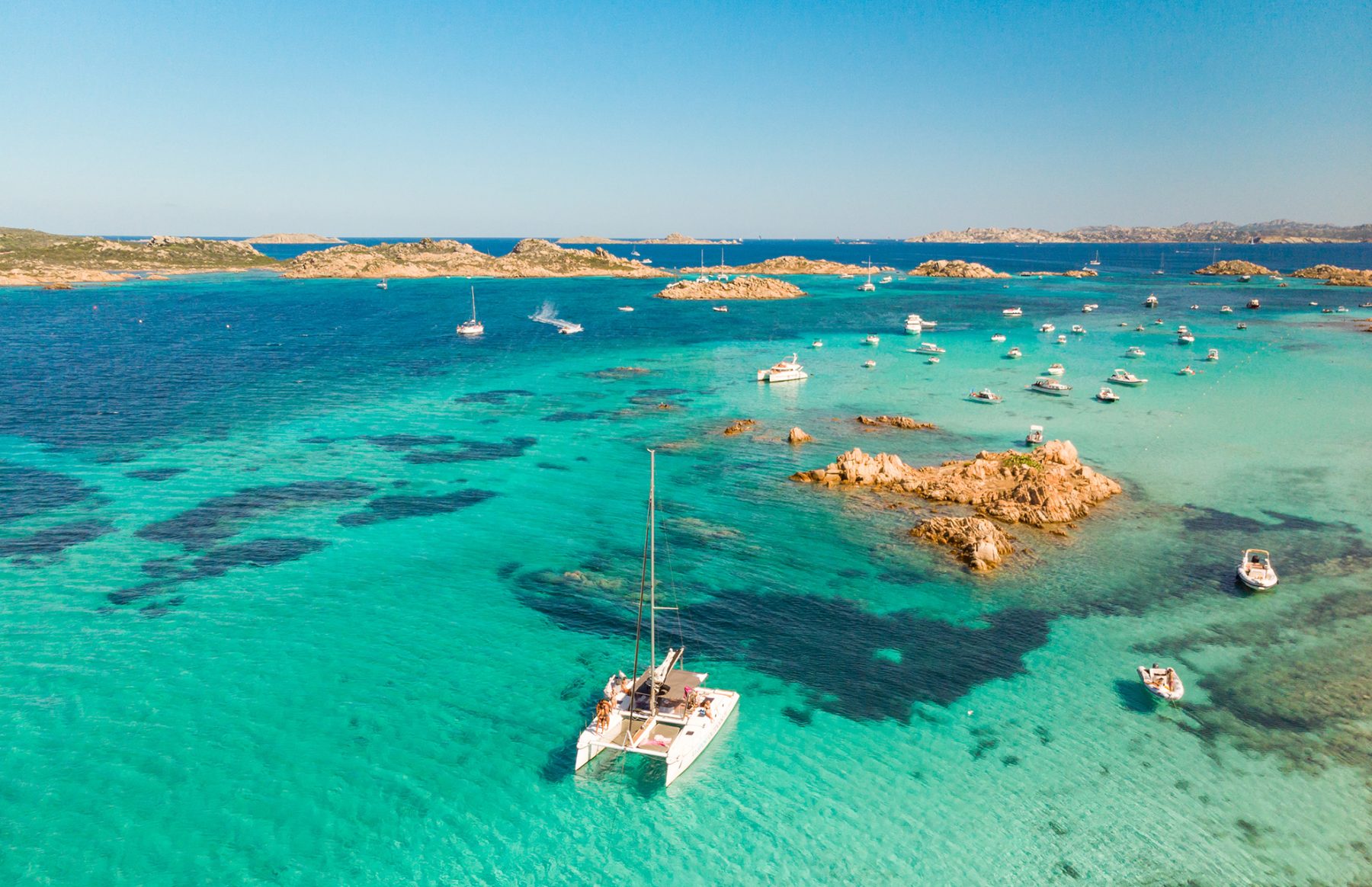Anchoring is a key skill for all sailors chartering a yacht, whether it be to drop anchor for a restful night’s sleep, enjoy a private swim, or discover a charming cove.
However, anchoring is not as simple as it may appear. It requires careful preparation, a dedication to safety and a methodical approach. In this article, we will take you through things to consider before anchoring, dropping the anchor, dragging and swinging, and raising the anchor.
⚓ Learn to Anchor
Our Sailing Courses
Are you somebody who has little or no experience with anchoring? You can learn anchoring and also other manoeuvres, cartography, adjustments and night sailing with qualified instructors thanks to GlobeSailor’s sailing courses! After several training courses, you can go on to receive more qualifications and become a skipper. Then, you can hire a boat without a skipper in the destination of your choice. You can save on the cost of a skipper and sail completely independently!
⚓ Considerations before Anchoring
Look for a Sheltered Place to Anchor
Before you anchor, it is important to consider where you will anchor. We recommend anchoring in a covered area to protect your boat from winds and currents. You should also take the water’s depth into account and ensure that your boat has the room to swing without colliding into other boats or objects.
A sandy or muddy bottom, sufficient water depth, and good protection are the ideal conditions! Contact a GlobeSailor advisor for recommendations of sheltered anchorages in your chosen yacht charter destination.
Identify Safe Anchoring Spots
As well as choosing a sheltered place to anchor, you should also identify spots that are safe to anchor. You can find safe anchorages with the Navily app, included as part of your GlobeSailor advantages.
You can also use the detailed nautical charts of our partner Savvy Navvy to identify ground conditions and impediments. Ensure you steer clear of main canals and underwater power wires!
Recognising the composition of the seabed is also essential. You do not want to damage natural features, such as coral reefs or seagrass, and incur fines in regulated areas! Most anchors work well on sandy or muddy bottoms, however other anchor types may be needed on rocky or grassy ones.
Gauge Water Depth
To gauge the depth of water on your yacht charter, do a test run and account for a lowering tide. Calculate the anchor scope ratio, 7:1 is suggested.
You want to ensure that you are surrounded by enough water to stay afloat! You should also check the water depth in the surrounding area, wherever the boat may swing. You do not want the water to be too deep as the line may not be big enough!
Get the Anchor and Line Ready
Attach the anchor line to the anchor and judge how much rode (anchor cable) must be spread out. You can make an anchor hitch knot to ensure that the anchor and line are connected securely. Ensure that all passengers are aware of your intentions, and instruct them to wear life jackets if necessary.


⚓ Dropping the Anchor
Move to the Intended Anchor Position
Once you have picked a suitable spot to anchor and verified the depth, it is time to drop the anchor. As with a mooring buoy, move in the direction of the designated anchor position. When you get to the designated area, stop the boat.
Lowering the Anchor
Carefully and slowly, lower the anchor to the sea floor. As the boat moves back, decrease the scope to a ratio of 4:1 (all chain) or 6:1 (rope chain). Put the boat in reverse for a short while and dig the anchor in quickly. Allow the boat to gently drift back while paying out extra rode once the anchor is on the seafloor. Once you have let out enough scope, fasten the rode (anchor cable) to a bow cleat.
Setting the Anchor
Knowing how to set the anchor is another important skill needed for your yacht charter. To set the anchor, you want to dig the anchor into the seafloor. You can do this by applying reverse engine power in short bursts. Monitor the boat’s position to confirm that the anchor is holding fast.
Dropping a Second Anchor
If conditions are challenging or extra security is needed, you may consider dropping a second anchor. Position this anchor at an angle of 30 to 45 degrees from the first anchor. Give additional rode (anchor cable) for this anchor and set it in the same way as the first. This technique is called kedging and provides extra holding power.

⚓ Dragging and Swinging
Dragging
Your anchor may drag in different sea or weather conditions. You can sight on two landmarks on shore, or use electronics such as GPS, a chart plotter, or a depth finder to sound an alarm if the boat is moving.
If the wind, current or tide changes and causes the boat to swing over the anchor, it may reset itself on the bottom. If it does not you will need to re-set the anchor.
If the boat continues to drag, we recommend selecting another anchorage. It’s important to stay vigilant at all times when anchored!
⚓ Raising the Anchor
Retrieving the Anchor
To raise anchor, cruise slowly towards the anchor while pulling in the rode (anchor cable). When you are directly over the anchor it should pull free. If it becomes stuck, attempt to shift the direction of pull on the rode by slowly rotating the boat in a wide circle.
Effective Communication
Effective communication between everybody on the boat is essential and makes the process of raising the anchor easier. For some sailors, hand signals can help. Bring the anchor and line on board and put it away so it’s ready for an immediate redeployment!

As you prepare for your yacht charter holiday, remember that anchoring is a crucial skill that ensures your safety and enjoyment on the water. Now that you have more information on how to achor, all you need to do is begin your sailing holiday!




